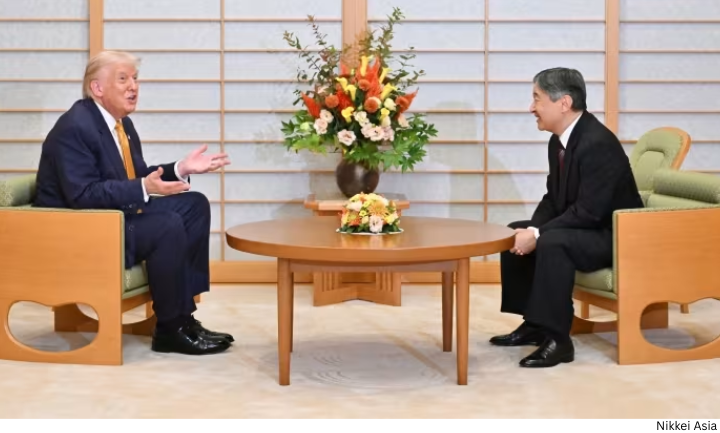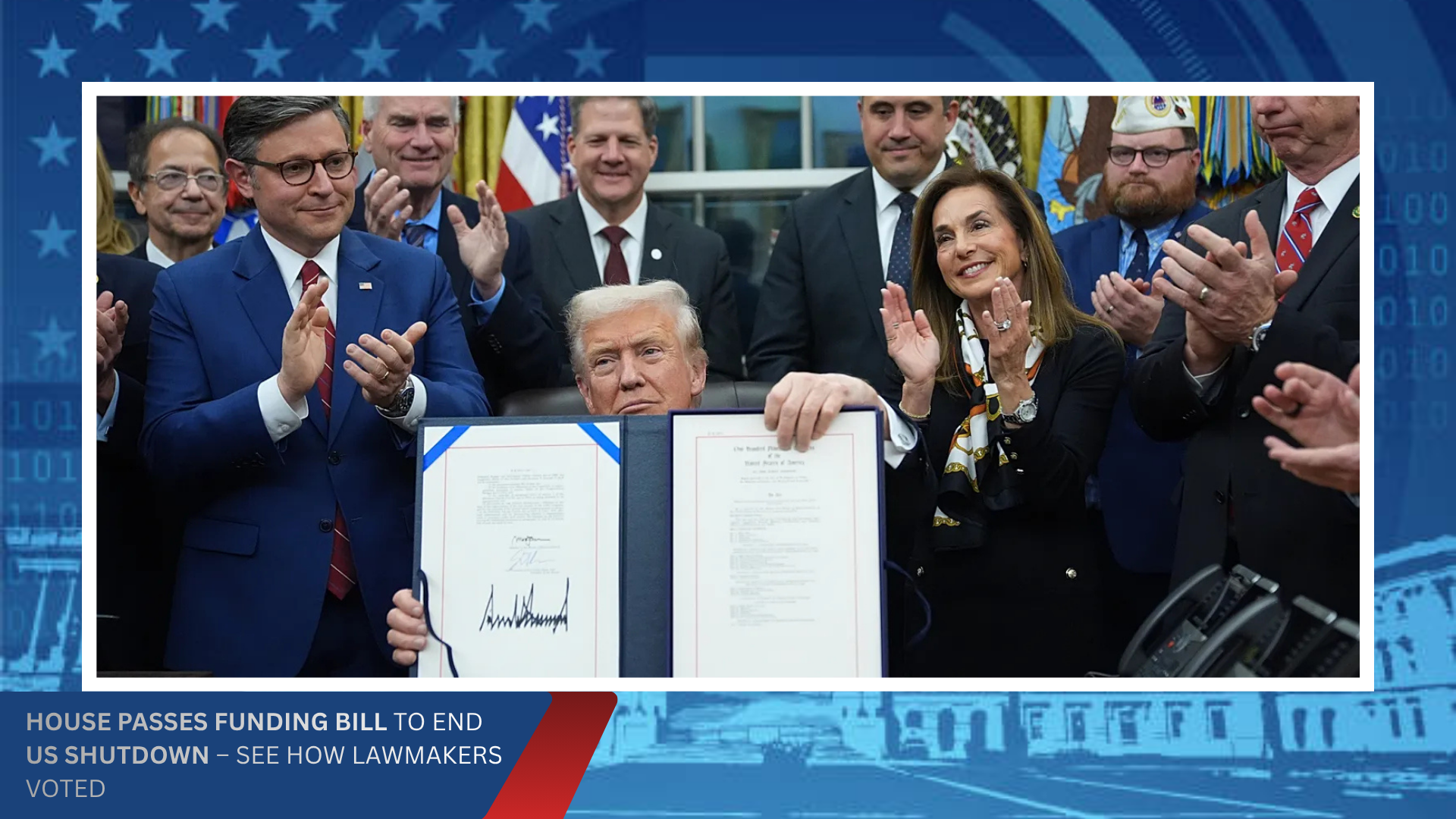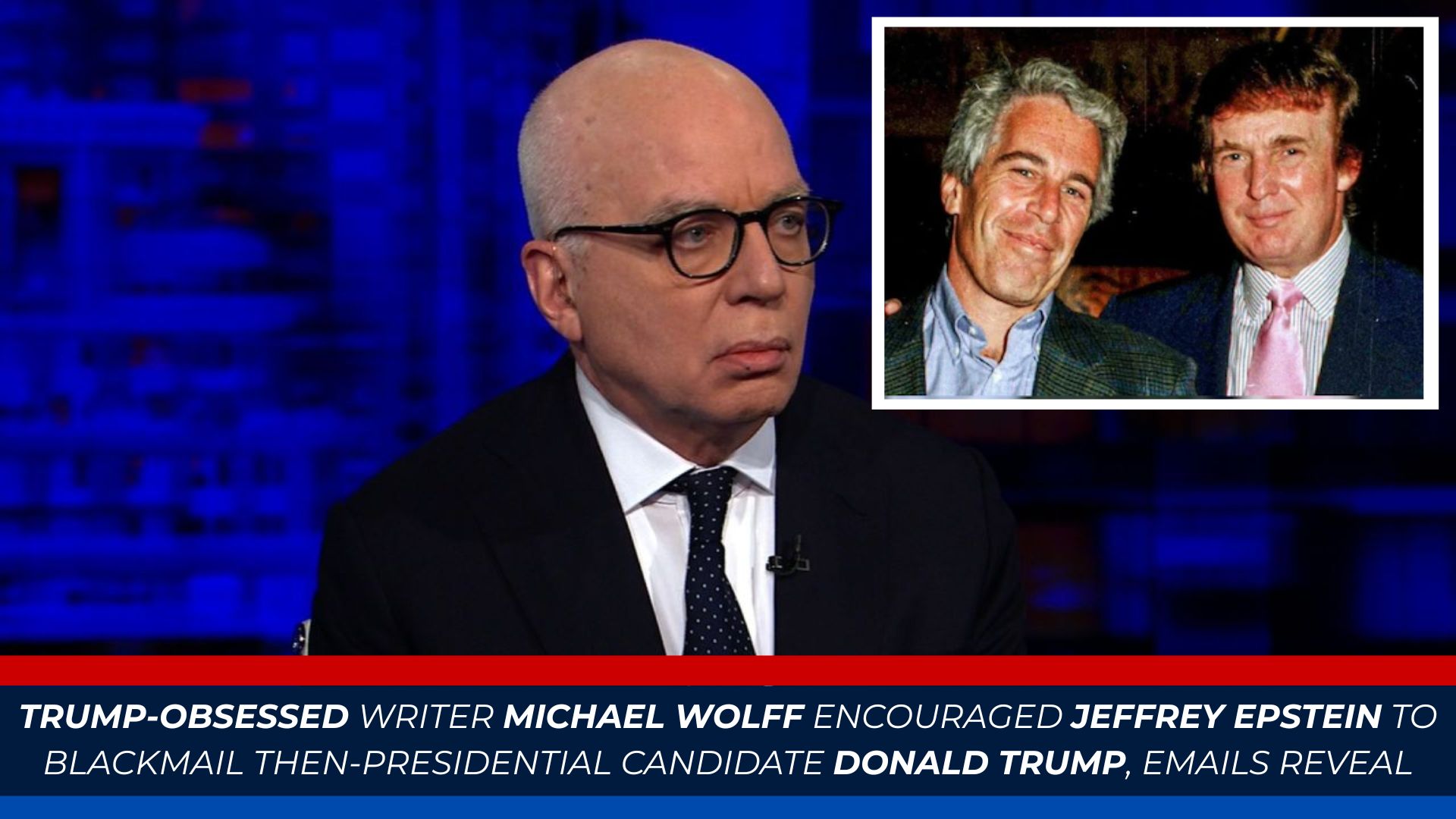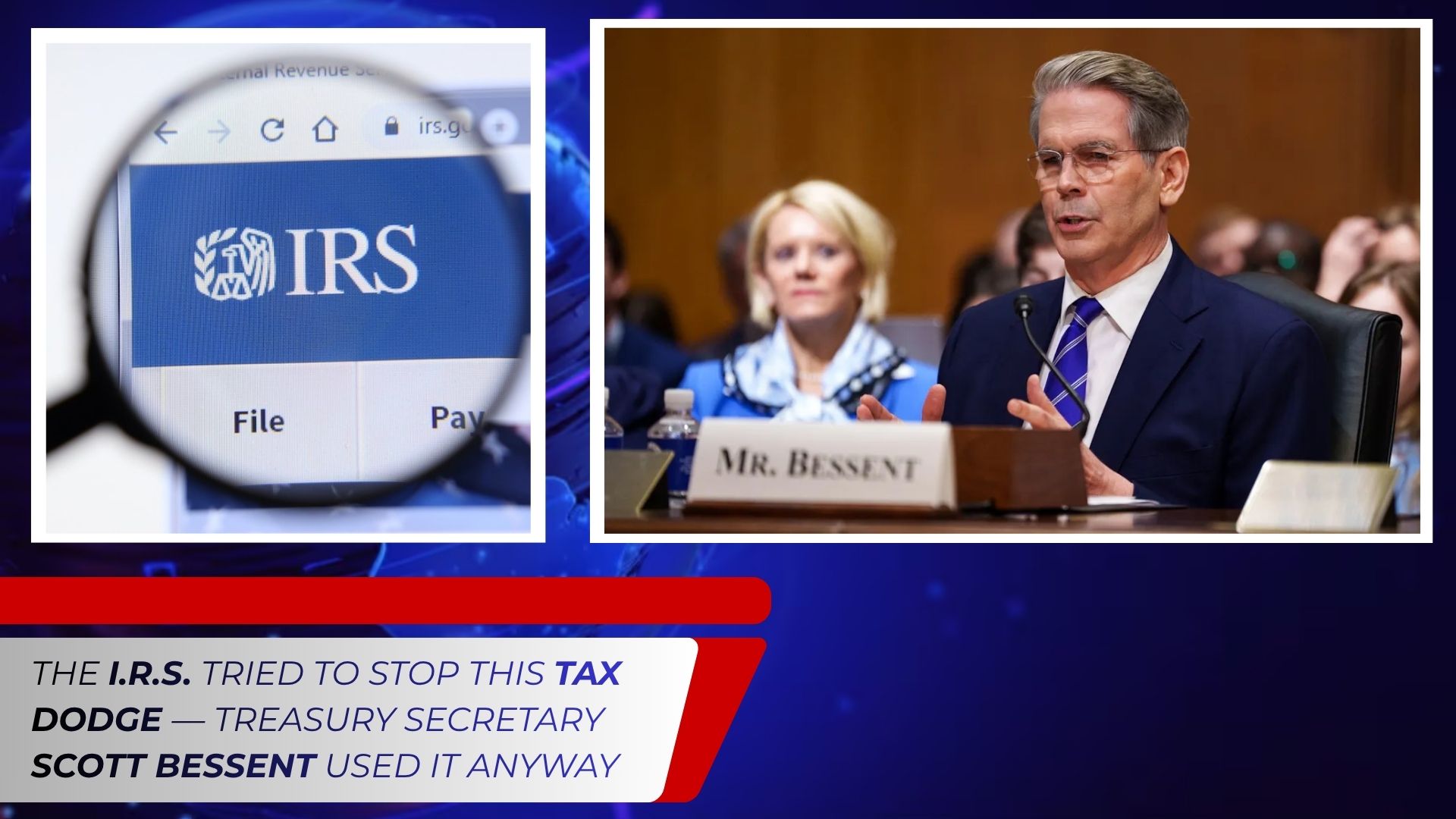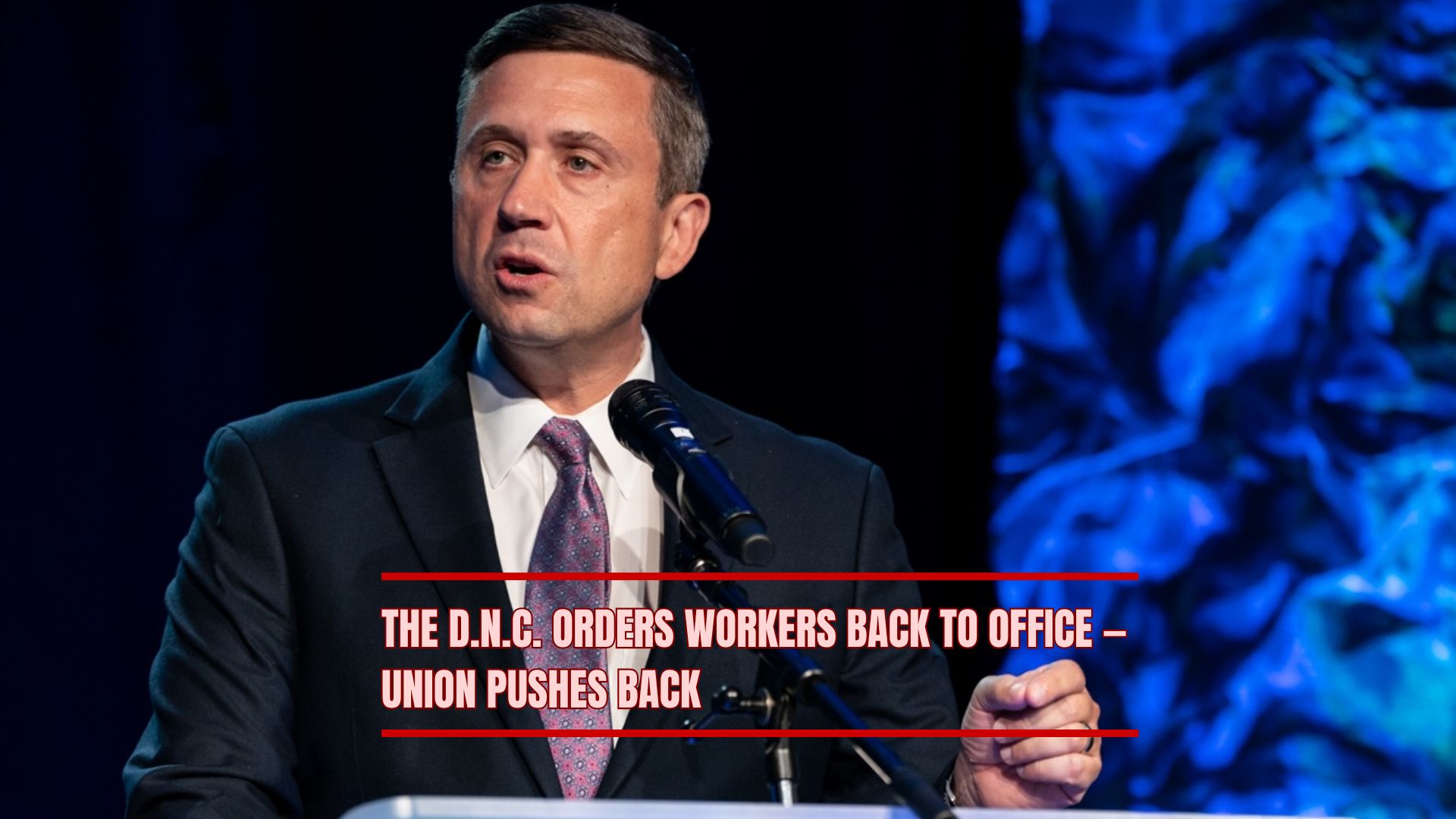Former President Donald Trump made headlines in Tokyo this week as he was formally greeted by Emperor Naruhito, Japan’s ceremonial monarch, ahead of scheduled meetings with the nation’s newly appointed prime minister. The visit underscores Trump’s continued high-profile presence on the international stage and draws attention to his evolving role in global politics, even as he remains a central figure in U.S. domestic political discourse.
The greeting by Emperor Naruhito, conducted in the traditional protocol of the Japanese imperial household, signified a symbolic gesture of respect and recognition. While largely ceremonial, such events carry diplomatic weight, signaling Japan’s willingness to engage with visiting dignitaries and prominent global figures. The formal nature of the meeting also emphasizes the careful choreography inherent in international relations, where protocol, symbolism, and optics are as meaningful as substantive discussions.
Trump’s upcoming meeting with Japan’s new prime minister is expected to focus on several key issues, including economic cooperation, regional security in East Asia, and continued collaboration on technology and trade. Analysts note that Japan, as a key U.S. ally in the region, remains particularly attentive to developments in U.S. politics and foreign policy, including the influence of high-profile former leaders on bilateral relationships.
During the Emperor’s greeting, Trump remarked on the historical significance of the imperial family, praising its long-standing role in Japanese culture and diplomacy. “It is an honor to meet Emperor Naruhito, a symbol of continuity and tradition,” Trump said, emphasizing the mutual respect between nations and the importance of personal diplomacy in international affairs.
Observers note that the visit is emblematic of a broader trend: the continued influence of former U.S. presidents on global politics. Even without formal office, Trump maintains significant visibility and leverage, both through public diplomacy and as a figure who can mobilize support among key international stakeholders. In this context, the visit to Japan serves multiple purposes — reinforcing personal stature, signaling alignment with U.S. allies, and projecting influence ahead of potential domestic political campaigns.
Security and ceremonial arrangements for the Emperor’s greeting were extensive, reflecting the formal nature of Japan’s imperial protocol. Trump and his delegation were escorted through the palace grounds with precision, including a combination of traditional guards, modern security measures, and ceremonial aides ensuring adherence to centuries-old customs. The attention to detail underscores the blend of historical respect and contemporary political significance in high-profile diplomatic engagements.
Japan’s new prime minister, who assumed office earlier this year, is expected to discuss strategic and economic priorities with Trump during their meeting. Topics likely include regional security in the Indo-Pacific, collaboration on supply chain resilience, and trade policies that impact both nations. While Trump does not currently hold executive office, his influence within the Republican Party and his strong international profile mean that Japanese officials are keenly interested in his perspectives and potential policy preferences.
Political analysts suggest that Trump’s visit may also serve a domestic audience, reinforcing his image as a globally engaged statesman. For supporters, the trip symbolizes continued relevance and influence in shaping international affairs. For critics, it raises questions about the role of former presidents in diplomacy, particularly when acting independently of formal governmental channels.
Trump’s reception in Japan reflects both the enduring prestige of the Japanese imperial family and the strategic significance of the United States in East Asian geopolitics. The optics of the meeting — carefully documented and widely reported — highlight the intricate interplay of ceremony, media coverage, and political messaging. By engaging directly with both the Emperor and the prime minister, Trump positions himself as a key interlocutor in matters that extend beyond domestic politics.
The timing of the visit also coincides with broader regional developments. Rising tensions in the Taiwan Strait, evolving North Korean missile tests, and shifting trade dynamics across Asia make Japan a critical partner for the United States. While Trump’s official role is limited, his interactions are closely watched by policymakers, investors, and international media, adding layers of significance to ceremonial events such as the Emperor’s greeting.
Observers have noted that former presidents often leverage symbolic diplomacy to maintain global visibility. Meeting with monarchs, attending state ceremonies, and engaging with foreign leaders allows former leaders to influence international perceptions, shape narratives, and signal potential policy priorities. In Trump’s case, the combination of ceremonial engagement and anticipated meetings with the prime minister underscores both the performative and substantive dimensions of such diplomacy.
The event was widely covered by international media, with photographs capturing Trump’s interaction with the Emperor and highlighting the formal decorum of the palace setting. Analysts note that the imagery serves a dual function: reinforcing personal prestige and signaling continuity in U.S.-Japan relations, regardless of domestic political transitions.
While the substantive outcomes of Trump’s meetings remain to be seen, the visit highlights how former U.S. leaders can continue to shape international dialogue. Even without official authority, Trump’s presence and commentary on regional and global issues maintain political and media relevance. This blend of symbolism, personal diplomacy, and political messaging reflects the modern interplay between former officeholders and ongoing geopolitical engagement.
In conclusion, Trump’s greeting by Emperor Naruhito and his upcoming meetings with Japan’s new prime minister underscore the continuing significance of personal diplomacy, ceremonial protocol, and international visibility for former presidents. The events in Tokyo illustrate how symbolism and strategy intersect on the world stage, offering insights into the ways former leaders navigate influence, maintain relevance, and engage with global partners amid ongoing domestic political developments.
%20(4).png)



